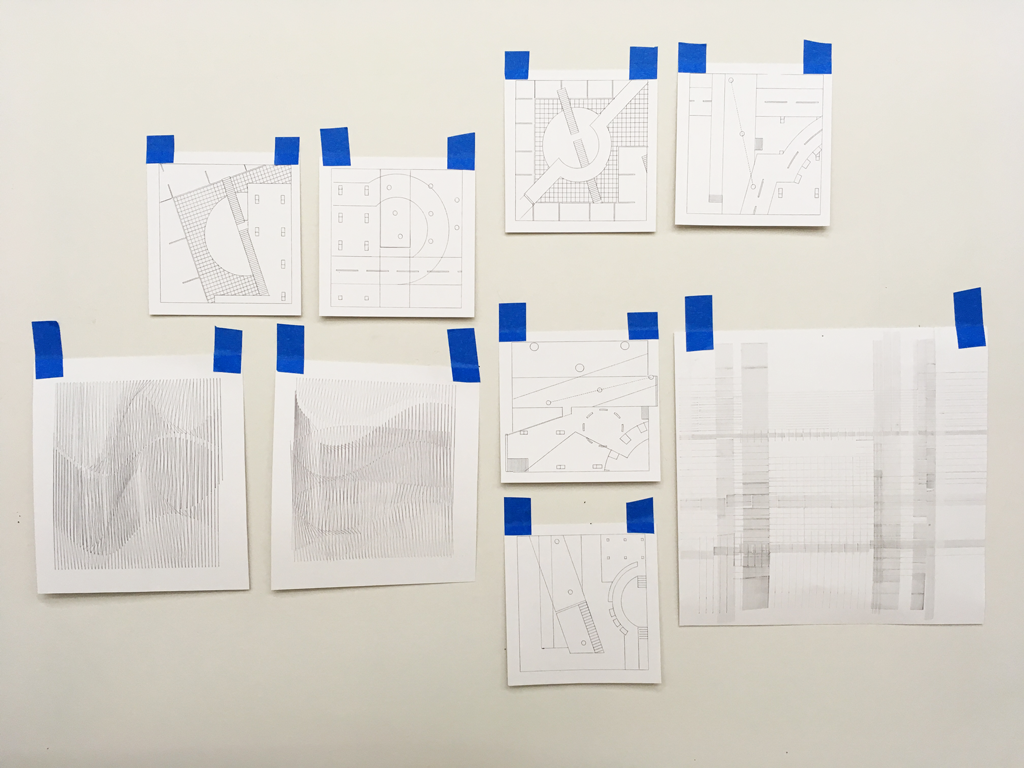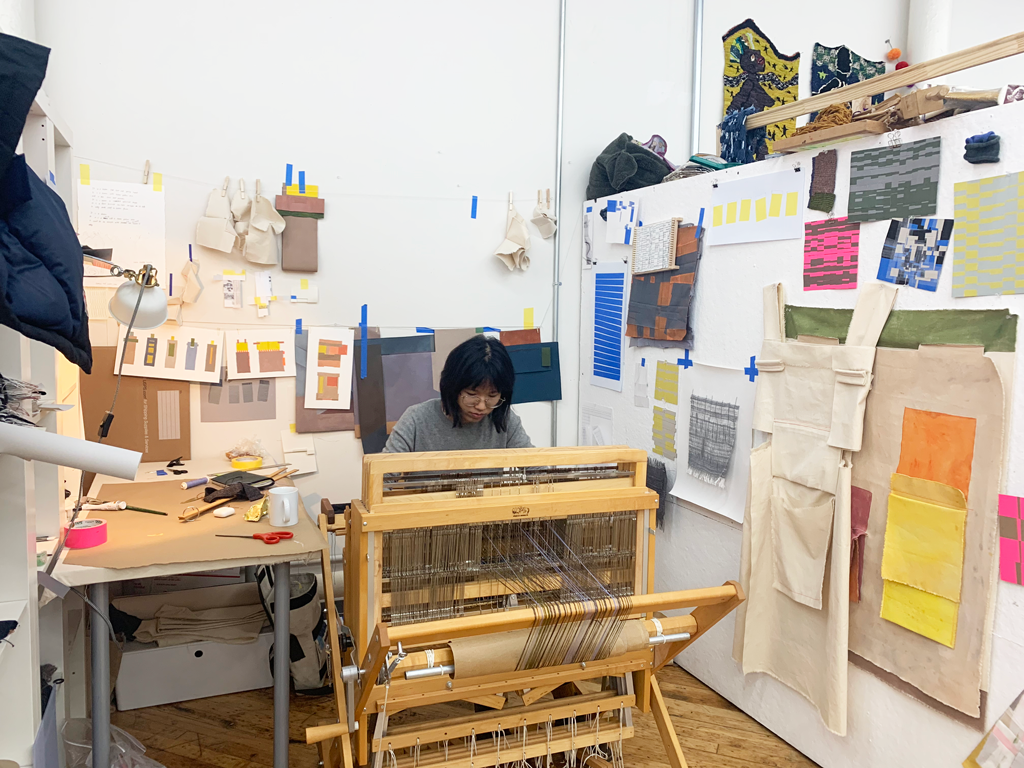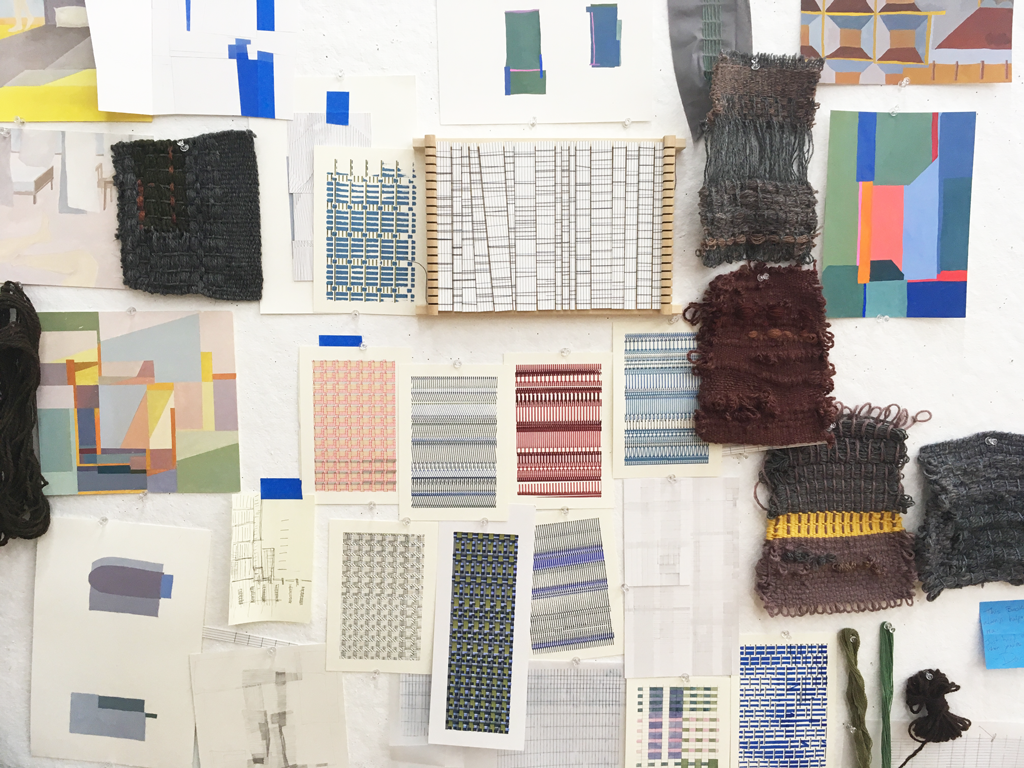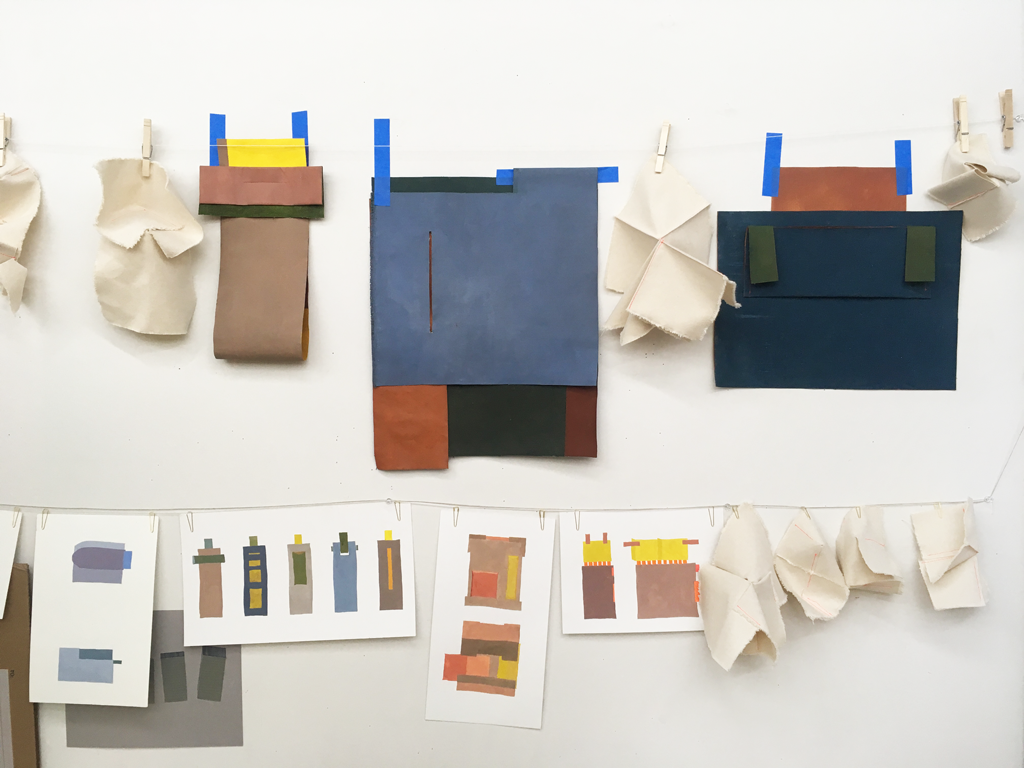AIR Artist Highlight: Tiantian Lou
Tiantian Lou’s studio is full of small projects and samples. These are emblematic of what she has learned about herself over these last few months. She is jumping around themes and materials, exploring the artistic process while also gleaning from other artists what this process can be. They’re all tests instead of large completed works. Tiantian has only recently come to work with textiles, so this exploration has been fun and a valuable way to play with how they can fit in her larger artistic practice.

Her bachelor’s education is in architecture from RISD, and it wasn’t until her last year that she started thinking about textiles. “I started my thesis with architecture and jewelry and their relation to the human body. It just naturally comes to textile, it’s unavoidable in a way. There’s a layer of textile to construct the space.” Unlike drawing or painting, where you can just pick up a pencil and start creating, work in textiles often involves new tools that seem intimidating. Despite this, Tiantian has connected with the form that appears the most daunting: weaving. She found comfort in similar forms and structure, but it is also open enough so she can explore different approaches. Almost anything can be inserted into the weft, and there are manipulations with the style of weave as well.
“I feel like weaving is a way to construct the structure in a way that I am more familiar with. I feel like I speak more to the language of weaving.”

Another surprise has been how much she enjoyed AIR's Textile History course. Going in without knowledge or expectation of what the course would be, Tiantian was enthralled with how textiles have built and formed cities throughout history, and the part they have played in the creation of daily life. The residency does not just include classes and exploration of techniques but also classes to enrich the work of the artists as well as professional development. The six-week course is a small survey of the history of textiles and their influence within culture. Textiles weren’t taught in any of her previous art history courses, even though they are deeply connected to all aspects of life throughout history.
“It’s so connected in every part of art history, architecture history and it’s also connected to [the] social and economic. It’s art, but it’s not only art, it has utility to it. It has shaped a lot of human history, city history, local history. ”

Body intimacy and the relationship between the body and a constricting, set space are themes that Tiantian explores in her work across mediums. Textiles, outside of clothing, are an important part of this exploration. Specifically, the way textile and fabric can be used to create a soft and temporary barrier in static space and yet maintain a structure. Her work at TAC has since started to include painting and different ways to look and use canvas through her foldable paintings series. In her undergraduate thesis, she explored ways to look at and design a room by creating new planes from items within the space. These shifts are based on how the body exists and interacts with the room. The foldable paintings work in a similar way, interacting and shifting as the body interacts.
“I think those tiny shifts and change of flipping a door and window, just adds the layer of intimacy in the house. It’s not just concrete blocks, it has more interaction with the body. ”
The open space of the studio has been a great experience for Tiantian. Without a previous studio practice, she has enjoyed learning from the other residents what it is to have an artistic practice. Group critiques, as well as visiting artists, have helped her grow in developing her work and the conversation around it as well.
Tiantian is also attentive to how her fellow studio mates creatively approach their work. Many artists in the cycle work with directly with current social concerns, something that previously had not entered Tiantian’s work. Together with Winnie van der Rijn, of AIR cycle 10, Tiantian began working on a project examining ideas of revolution within the parameters of a dinner party. “I wish I could explore [social concerns] but I think it’s a part of it, about feminism, is that I can do whatever I want to do. I can do the work that 20 years ago only white males could do, being a minority and being female does not mean that I have to work on this issue in my work. I can just be interested in it.”

This openness to change, experimentation and collaboration emanate through Tiantian's work. The foldable, flippable paintings explore the manipulation of a traditional form, which she has also started to intervene with weavings. Each piece is colorful, yet muted, chosen from a color palette that is personal to Lou, but not with a specific meaning. Color is not typically used in architecture, but she loves working outside of just black and white. The manipulated canvas has started to take form in larger pieces that can function both as clothing and in an interior space. She has also started incorporating weaving into her painted canvas in the form of functional tabs and 'buttons.'
“It just naturally comes to textile, it’s unavoidable in a way. There’s a layer of textile to constructing the space. ”
For the rest of the residency, Tiantian will continue to develop her clothing pieces and design a way for them to be displayed at the exhibition in September. This will not only be the final part of her TAC residency, but September also brings the start of graduate school at Princeton University in architecture. We look forward to seeing how her work continues to explore the body in space, as Tiantian previously explained,
AIR Cycle 10 will be having their final exhibition on September 12th, and open until the 25th. Please save the date!